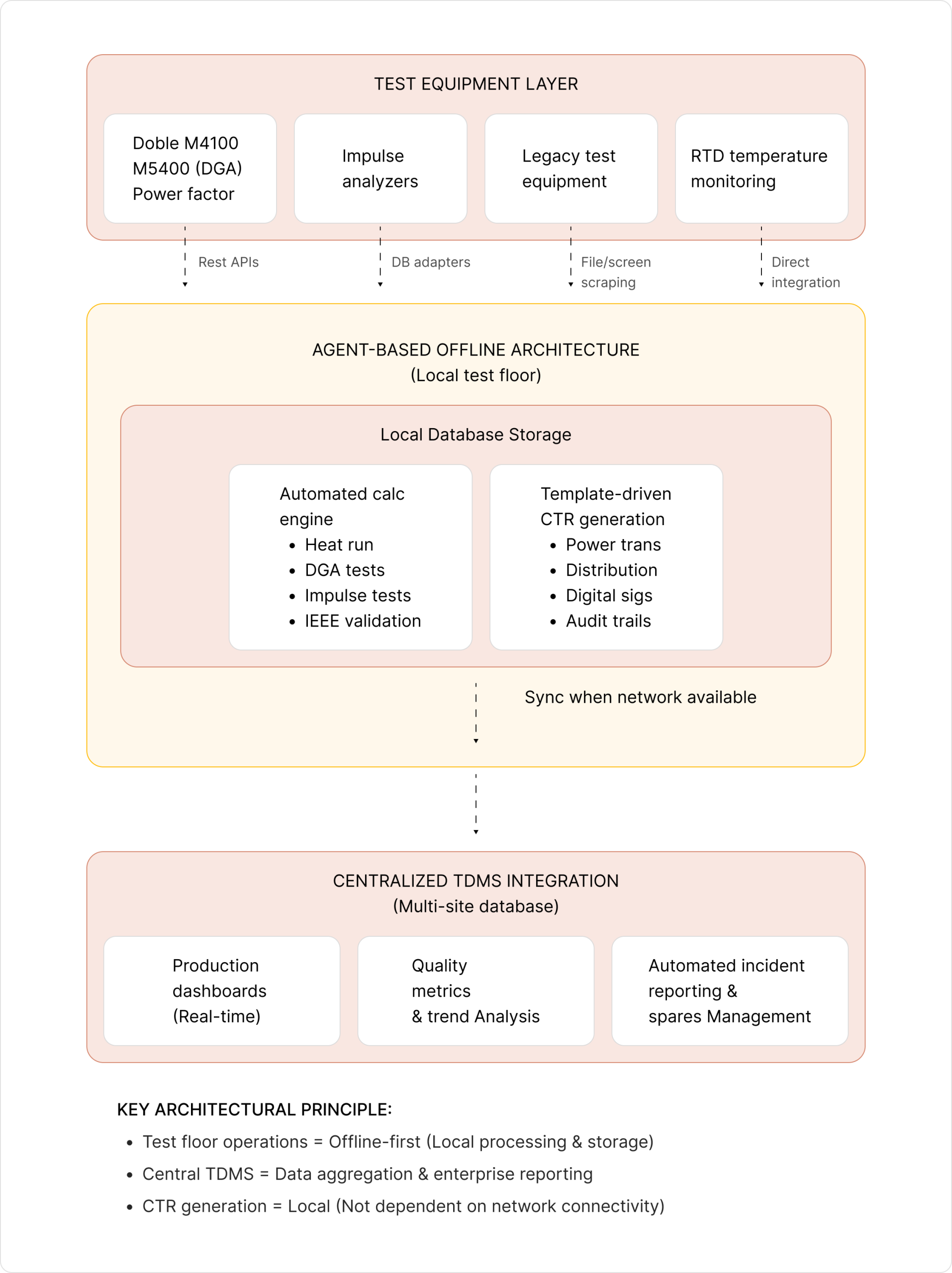Transforming Transformer Manufacturing with Digital Integration
Manufacturing
AI & Data Engineering
Testing Optimization

The Opportunity
The Transformer Industry at an Inflection Point
Between 2023 and 2030, the global power transformer market is projected to grow from $25.6 billion to $49.3 billion, driven by aging grid infrastructure and renewable energy integration. However, supply chain disruptions have extended lead times for large power transformers to 36 months, while DOE efficiency standards demand advanced testing protocols to save utilities $824 million annually.
Prolec GE Waukesha recognized that their Shreveport facility expansion was being constrained by these very challenges, with on-time delivery stuck at 82% due to certification lags
The Vision
Integrated Digital Operations for Manufacturing Excellence
Their vision was comprehensive: create a unified digital platform that would transform testing workflows from manual, error-prone processes into automated, compliance-ready operations that could scale with growing demand.
Vision Pillars
Integration
Certification
Intelligence
Operations
Design
Optimization
The Solution
Building Integrated Digital Operations with Torsion

Technical Implementation
Core Solution
Components
Why: To eliminate manual data transfer processes that were causing errors, rework, and certification delays.
Agent-Based Offline
Architecture
Why: To ensure continuous operations in harsh test floor environments where network reliability is inconsistent.
Template-Driven CTR
Framework
Why: To standardize reporting processes while maintaining flexibility for different transformer types and customer-specific requirements.
Automated Calculation
Engine
Why: To eliminate manual calculation errors and accelerate the certification process while ensuring compliance.
Centralized TDMS
Integration
Why: To provide unified data management across manufacturing locations and enable real-time production intelligence.
Production Optimization
Suite
Why: To provide unified data management across manufacturing locations and enable real-time production intelligence.
Technical Implementation Approach
The Impact
By The Numbers
Delivery
(Shreveport Facility)
Effort
Generation
Generation
Validation
Generation
Generation
(CTR)
Generation
Generation
Integration
Analysis
Analysis
Delivering Measurable Manufacturing Excellence

Looking Ahead
Sustaining Digital Leadership in Manufacturing
This case demonstrates how targeted digital integration can turn industry constraints such as compliance pressure and testing bottlenecks into measurable gains in delivery, capacity, and quality.
